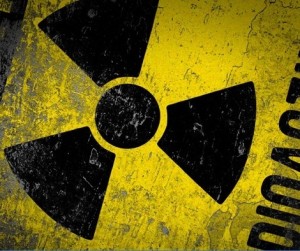☢ Massive Amounts of Steam Video Aug 14 2011 During Daytime at Fukushima Daiichi Nuclear Reactors ☢
☢ Radioactive Steam Escaping - The Ground at Fukushima Facility is Cracking ☢
☢ Intense Fire and Smoke at Fukushima Daiichi Nuclear Reactors 22 Aug 2011 ☢
☢ Fukushimas China Syndrome With Radioactive Steam and Media Blackout ☢
Arnie Gundersen came out with a new video yesterday. People have been talking a lot about the smoke and steam that comes out from cracks at the Fukushima Daiichi Nuclear Plant. Like today if you were to look at the live cam you would notice that the fog / steam around the reactors are so thick that the reactor units are not even seen on the cam.

The talk going around is that the nuclear core have melted through the containment and is now in contact with the groundwater, causing the smoke and steam that we see. Russia Today asked Mr. Gundersen to comment on this and he declined. Because to him there isn't good solid engineering data to make any conclusive remarks on the situation, Gundersen says he don't think there is enough data to either support or refute it. And I would probably do the same if I where in his position at this point.
Gundersen goes on to talk about much more important issues, like the finding of radioactive Sulfur-35 in the atmosphere in California. The finding have been confirmed but why there was radioactive Sulfur-35 have been left out. It turns out that when saltwater is radiated with neutrons it turns into Sulfur-35. What this means is that a nuclear chain reaction is still going on to some extent and continue to contaminate the surronding environment and upper atmosphere with large doses of radioactivity. TEPCO on the other hand have stated that it's reactors have been shutdown. But this can't be the case if Sulfur-35 is found in the air.
New Data Supports Previous Fairewinds Analysis, as Contamination Spreads in Japan and Worldwide
from Fairewinds Associates on Vimeo.
This is the text from Fairewinds site.
In a second area of concern, Fairewinds disagrees the NRC's latest report claiming that all Fukushima spent fuel pools had no problems following the earthquake. In a new revelation, the NRC claims that the plutonium found more than 1 mile offsite actually came from inside the nuclear reactors. If such a statement were true, it indicates that the nuclear power plant containments failed and were breached with debris landing far from the power plants themselves. Such a failure of the containment system certainly necessitates a complete review of all US reactor containment design and industry assurances that containments will hold in radioactivity in the event of a nuclear accident. The evidence Fairewinds reviewed to date continues to support its April analysis that the detonation in the Unit 3 Spent Fuel pool was the cause of plutonium found off site.
Third, the burning of radioactive materials (building materials, trees, lawn grass, rice straw) by the Japanese government will cause radioactive Cesium to spread even further into areas within Japan that have been previously clean, and across the Pacific Ocean to North America.
And finally, the Japanese government has yet to grasp the severity of the contamination within Japan, and therefore has not developed a coherent plan mitigate the accident and remediate the environment. Without a cohesive plan to deal with this ongoing problem of large scale radioactive contamination, the radioactivity will continue to spread throughout Japan and around the globe further exacerbating the problem and raising costs astronomically.








No comments:
Post a Comment